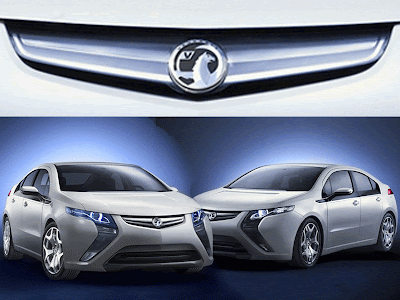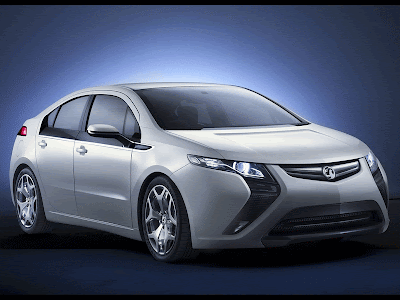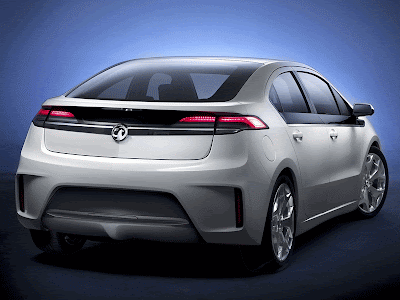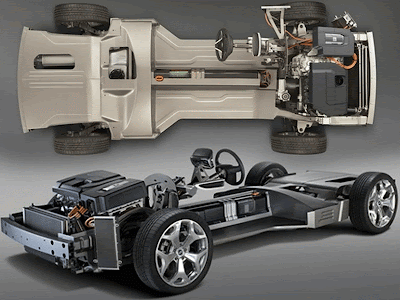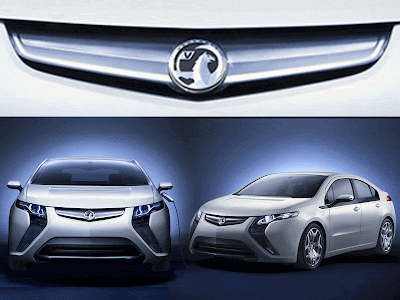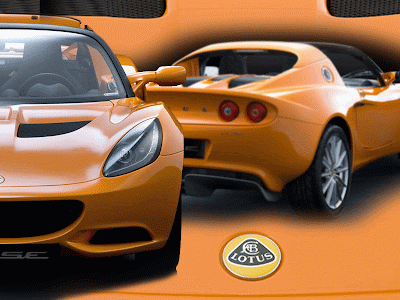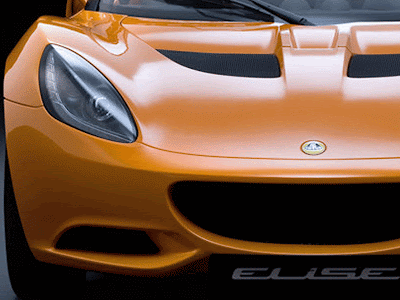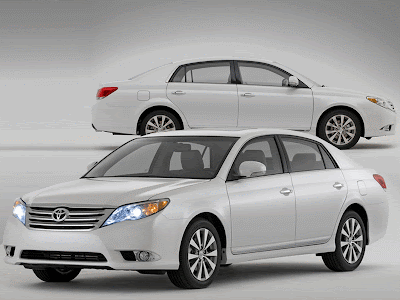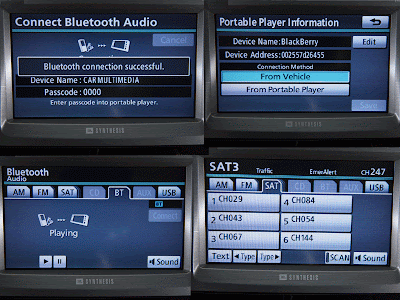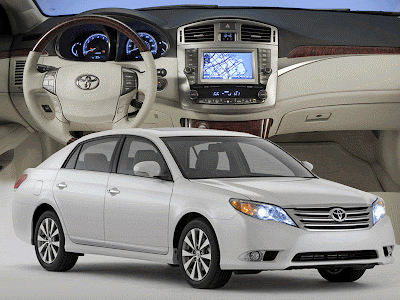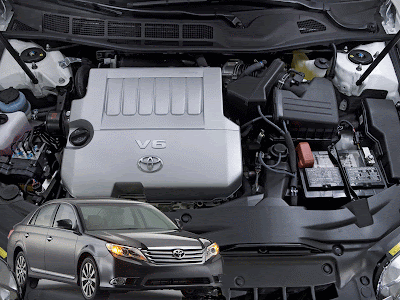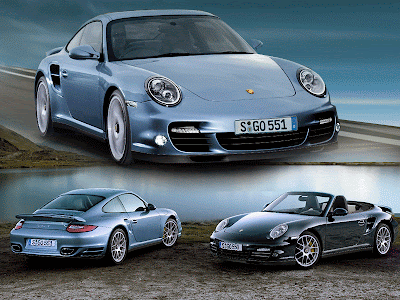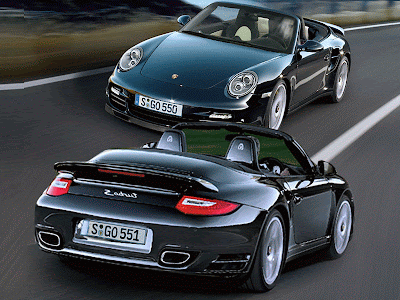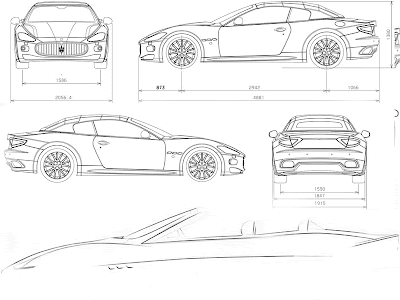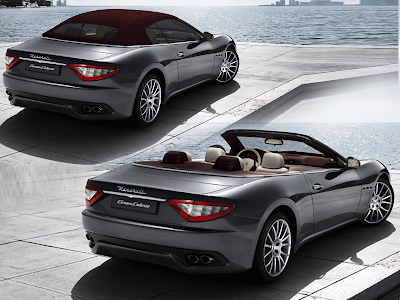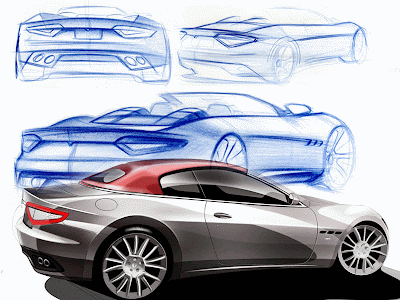Showing posts with label 2011. Show all posts
Showing posts with label 2011. Show all posts
ICONIC Motors answers with 2011 ICONIC AC Roadster, for those who crave unparalleled power and innovative performance. The 2011 ICONIC AC Roadster is designed from the ground up to be on of the world most completely refined and advanced super cars. Virtually no other vehicle in the planet has undergone the same kind of engineering development and attention to detail as the ICONIC AC Roadster.
2011 Iconic Motors Sports Car AC Roadster
Designed as the world’s most completely refined and advanced super cars, 2011 Iconic Motors AC Roadster has got styling cues from the legendary Shelby Cobra.Now American sports car company ICONIC Motors have partnered up with AC Cars and renamed the car AC Roadster. First revealed by AC Cars back in 2008 as the GTR Roadster, then unveiled in the flesh at last year's Top Marques Monaco event as the MkVI AC Cobra, ICONIC has partnered with AC to present the AC Roadster. The sports car a 6.9-liter V-8 rated at 800 horsepower married to a classic AC-styled roadster chassis weighing in at about 2,400 pounds. That's good for 60 mph in under three seconds, according to the company.
“The ICONIC AC Roadster is more than just a sports cars, it’s among the world’s most refined and beautifully designed super cars. It’s the lightest, strongest, most well engineered, high performance roadster of our time. The engine, drive train, support electronics and overall chassis make this one of the most complete vehicle packages on the market today and is made right here in the USA,” said Claudio Ballard, chairman and founder, ICONIC Motors.
This innovative process allows for ICONIC Motors to capture the look and style of timeless classic roadsters from the 1950's and ’60's, while infusing all of the modern technology and engineering available today, this super car is truly the first of its kind.
The 2011 ICONIC AC Roadster is the first of many uniquely designed modern era muscle cars that blend the legendary design cues of the past with the technology of the future. The sports cars is now available for order, with first deliveries to come in 2011.
Labels: 2011, ICONIC Motors, Sports Car, Super Cars
Through much of the last decade, Renault's product lineup lived up to the long-standing French reputation for peculiar design. This was particularly true of its flagship model, the bizarre looking five-door hatchback Vel Satis. That unsuccessful model is now set to be replaced by a much more conventional looking four-door sedan dubbed the Latitude. The Latitude is built on a stretched version of the mid-sized Laguna platform and shares its powertrain options, including the new 3.0-liter diesel V6.
The Latitude is based on the Renault Group’s 2010 Samsung SM5 sedan — which itself is based on the Renault Laguna — that recently went on sale in South Korea. Renault has today provided the first glimpse of its latest international status-enhancing family saloon, Renault Latitude. The Renault Latitude will replace the discontinued and controversial Vel Satis hatchback. Tailored to meet the demand of its different markets, Renault Latitude's specification will deliver the car's different customers a truly high-end package that will position it as the spearhead of international Renault's saloon car range. It will be shown at the forthcoming Moscow Motor Show, Russia, and is due to go on sale this autumn in Asia, Africa, Russia, Turkey, Gulf, Australia and Mexico.
European version of Renault Latitude will be one of the principal new attractions of the 2010 Paris Motor Show where visitors will get a chance to examine its interior design, while full details of the model’s equipment lists and engines ranges will also be released. The international media will be invited to road test Renault Latitude before the end of 2010, and sales will begin shortly afterwards. The contours of the grille are flanked by distinctive bi-Xenon adaptive directional headlights, while chrome embellishments contribute to the unmistakable impression of dynamism and status exuded by the car's overall lines. Its rear-end forms point to ample boot space, and the new car can effectively claim one of the biggest boots in its class. The rear lighting signature employs LED technology and harmonizes perfectly with the chrome rear strip which carries the new model's name: Renault Latitude.
Based on the same architecture as New SM5, which was recently launched in the Korean market, Renault Latitude profits extensively from Renault's engineering expertise. Occupants benefit from a comfortable, silent ride, as well as a particularly precise chassis and a choice of powerplants that are sure to give it a decisive edge over its rivals. The complete equipment list, which will be revealed at a later date, places the emphasis on innovation and travelling comfort, including a dual-mode air ionizer with double fragrance diffuser, triple-zone climate control, a massaging driver's seat, Bose Premium audio, the Renault hands-free card, etc.
2011 Ferrari Sports Cars 458 Challenge
Coming just a few months after the 2010 Frankfurt Motor Show unveiling of the Ferrari 458 Italia on which it is based, the Ferrari 458 Challenge introduces a number of important modifications to adapt it for competition use. Ferrari 458 was presented the 2010 Frankfurt Motor Show. Lately, the Ferrari 458 Challenge has made its world premiere debut in Maranello during the Annual Dealer Meeting.With the new 458 Challenge, Ferrari is offering its sportier clients - professional and gentlemen drivers alike - a car that is extremely responsive, with great performance and superb handling. This mid-rear V8-engined berlinetta will allow Ferrari Challenge participants to enjoy to the full the exhilarating cut and thrust of the race weekends on the world's leading circuits, as well as the passion that has always been an integral part of Ferrari's one-make championship.
The Ferrari 458 Challenge introduces a number of important modifications to adapt it for competition use. This car use the direct injection 4497 cc V8 remains strictly in production tune, with an output of 570 hp at 9,000 rpm. That said, modifications have been made to the gear ratios and calibration of its dual-clutch F1 gearbox to assure gamier torque at bluer revs. The Ferrari 458 dispute are as well equipt with the E-Diff electronic differential already employed on the road-going adaptation, a 1st for Ferrari’s track-only automobiles.
2011 Ferrari Sports Cars 458 Challenge
For a Ferrari Challenge model is the adoption of the F1-Trac traction control system, the most sophisticated of its kind. The F1-Trac system constantly monitors levels of grip for maximum high-performance road-holding. Two specific track-biased calibrations – wet and dry – have been developed for this application.Important work has also come in abbreviating the auto angle. This centered both the exterior and interior with Ferrari’s engineers boiling down particularly about abbreviating the thickness of the bodyshell panels and on using lightweight cloths, such carbon-fibre and Lexan.
Labels: 2011, Ferrari, Sports Car
The most enlightening spy photos of the production version of the 2011 Opel Ampera plopped in our inbox today. At first we thought it was just the concept model out testing, but a closer look at the completely undisguised Ampera with the German license plates revealed that this is the actual production model that's due to go on sale in Europe and the UK (as a Vauxhall) in late 2011.
2011 Opel Vauxhall Ampera Plug-in Hybrid
Vauxhall Ampera will be unveiled along with Vauxhall Meriva compact MPV at the Geneva Motor Show 2010. Vauxhall Ampera, schedule for production late next year, is a five-door four-seater with same design DNA as Astra and the Car of the year-winning Insignia. Ampera uses extended-range electric vehicle (E-REV) technology. E-REV uses electricity as its primary power source, supplemented by a small engine to generate electricity for its motors when electric power runs low. This helps the Ampera overcome the ‘range anxiety’ issues associated with pure electric cars.
2011 Opel Vauxhall Ampera Plug-in Hybrid
Unlike other conventional propulsion systems, E-REV uses electricity as its primary power source, supplemented by a small engine to generate electricity for its motors when electric power runs low. This helps the Ampera overcome the ‘range anxiety’ issues associated with pure electric cars. Vauxhall will unveil not one, but two cars at this year’s Geneva Motor Show on March 2, with world premieres of the all-new Meriva compact MPV and a futuristic concept car, which is set to boost the company’s credentials as a leader in environmental vehicles.
2011 Opel Vauxhall Ampera Plug-in Hybrid
A quick recap of the details we already know, the Ampera will use the same plug-in hybrid gasoline-electric drivetrain as the Volt. It mates a powerful electric motor and a 16-kWh, lithium-ion battery pack to a 75HP 1.4-liter gasoline engine. But unlike conventional hybrids that use gasoline engines to power the wheels when the battery is depleted, the Ampera uses the petrol unit to generate electricity for the electric motor that always drives the (front) wheels. Owners will be able to charge the battery pack with a home outlet and drive for about 64km or 40 miles before the gasoline engine-generator kicks in to extend the Ampera's range to more than to more than 300 miles or 480 kilometers.
2011 Opel Vauxhall Ampera Plug-in Hybrid
Bolstering this message still further at the show will be the groundbreaking Ampera extended-range electric vehicle and Vauxhall’s most economical production car to date, the latest Corsa ecoFLEX.
2011 Opel Vauxhall Ampera Plug-in Hybrid
‘Vauxhall is covering all bases at Geneva,’ said Duncan Aldred, Vauxhall’s Managing Director. ‘With the Meriva, we have a unique and innovative take on family motoring, but the concept car and Ampera prove that we are truly at the forefront of environmental technology. These vehicles also show that their versatility and efficiency doesn’t come at the expense of stunning design.’
Labels: 2011, Concept Car, Opel, Sports Car
Making its debut at the 80th International Geneva Motorshow, the 2011 model year Lotus Elise introduces a number of changes and improvements to maintain its class leading position. The Lotus Elise revolutionised the sportscar market 14 years ago when the small lightweight agile 2-seat mid engine sportscar was introduced. By ensuring that the Lotus Elise stuck rigidly to Lotus' core values of performance through light weight, the Lotus Elise was able to produce supercar performance with city car economy.
2011 Lotus Sport Cars Elise
The body of the new 2011 Lotus Elise is an evolution of the iconic Elise design, retaining the character and style, while offering a more planted, purposeful stance and a pure, contemporary look that links it to the Evora. As with all Lotus product the design is an exciting blend of dramatic style and functional efficiency. At the rear of the car the new engine has been encased by a distinctive "twin-spine" engine cover whilst lower down a more aggressive diffuser is tightly wrapped by an elegant new bumper design that now includes the rear licence plate.
2011 Lotus Sport Cars Elise
New headlamp units with distinctively sculptured LED lighting guides (incorporating daytime running lamps and direction indicators) give a contemporary twist to this classic design. Elsewhere, the signature, Lotus "mouth" and familiar sculptured forms have been sensitively refined to give a crisper, more dynamic look.
2011 Lotus Sport Cars Elise
The rear boot is now opened from the cockpit rather than via a separate key operation. The high quality feel of the Lotus Elise is continued throughout the car with the Lotus Elise graphic incorporated into the new side LED direction indicators, like those on the Evora. The driving position, from the perfectly positioned pedals and steering wheel, to the comfortable and supportive seats with ProBax technology means that, like all Lotus cars, the driver becomes part of the car rather than being just a passenger. With the sleek new body the aerodynamics have improved giving a reduction in the coefficient of drag of 4%.
2011 Lotus Sport Cars Elise
The Lotus Elise introduces the new 1598 cm3, 1ZR-FAE engine, provided by Toyota. The key to this engine's performance and efficiency is the Valvematic system (a variable valve lift mechanism), which is combined with the dual VVT-i (Variable Valve Timing-intelligent). The engine continuously controls intake valve opening/closing timing and the intake valve lift to vary the volume of the intake airflow, giving significant improvements in efficiency and fuel economy. This ensures optimal performance based on the engines operational condition, thus helping the Lotus Elise achieve both high fuel efficiency and high performance.
2011 Lotus Sport Cars Elise
First of all, the maximum power output is achieved at near maximum revs (engine speed) of 6800 rpm and maximum torque (a respectable 160 Nm, 118 lb.ft) is reached at 4400 rpm. This gives a good combination of mid range pull but also encourages the driver to rev the engine to the maximum permitted engine speed of 7000 rpm (transient rev limit). Like all Lotus Elise sportscars, there are three shift up lights, on the binnacle cumulatively lighting when the driver is getting closer to the rev limiter and when all three are illuminated, they flash to indicate that the driver is almost on the rev limiter so time to change up a gear! New cast wheels have been designed specifically for the Lotus Elise and the new optional forged wheels weigh just 29.26 kg per set, 2.14 kg lighter than a set of lightweight cast versions. Both are available in silver or black colour.
Andreas Prillmann, Chief Commercial Officer for Lotus Cars said, "In its 14 years of production the Lotus Elise has accounted for 32% of all the 61 years of Lotus production, illustrating how significant to the brand and well loved it is. The 2011 Lotus Elise is greener, purer and more desirable, making it even more relevant to today's marketplace. The new Elise underlines Lotus' reputation as one of the most innovative sports car manufacturers in the world."
2011 Lotus Sport Cars Elise
The height of the engine cover has been raised by 34mm to accommodate the taller 1ZR engine compared to the previous 1ZZ engine from the outgoing model due, in part, to the additional Valvematic technology included on the new engine. This has given Lotus engineers an opportunity to subtly redesign the rear engine cover to match the design theme from the front and rear of the car.
The legendary Lotus ride and handling gives a superb high performance, sporty drive, combined with a compliant ride and progressive on limit handling, it makes the Lotus Elise a car that demands to be driven.
The entry level Lotus Elise weighs 876 kg, making it one of the lightest fully homologated sportscars in the world. This low weight translates into efficient performance with minimal environmental impact in terms of emissions and fuel consumption. The efficiency of the Lotus Elise structure means that the 136 PS (100 kW, 134 hp) delivers phenomenal performance.
Labels: 2011, Lotus, Sports Car
Evoking a time when travel was sophisticated, elegant and comfortable, the new Toyota Avalon possesses a distinctive new exterior style while offering a restyled interior rich with premium touch points and practical new technologies. Toyota introduced the boldly redesigned 2011 Toyota Avalon at the 2010 Chicago Auto Show. The third generation Toyota Avalon was introduced in four models: the standard XL, the sport Touring, the XLS, and the luxury Limited. Each combined generous interior room with powerful engine performance.
2011 Redesigned Toyota Avalon Third Generation
Designed at Toyota’s Calty Design Research in California, and assembled at Toyota’s Georgetown Kentucky manufacturing plant, the third-generation Avalons all have front grilles with horizontal chrome bars, large tail lamps, distinctive trunks, and dual exhaust outlets.
Even with numerous refinements inside and out, the Toyota Avalon remains true to the idea that comfort is honest and uncomplicated, and "Traveling Avalon Class" is rich in simple, familiar pleasures.
2011 Redesigned Toyota Avalon Third Generation
The new Toyota Avalon has dynamic and expressive lines, and an infusion of comfort, safety and technology advancements that enrich the driving experience. Upgraded equipment and technology features, such as a touch-screen navigation system with real-time traffic, and Bluetooth® hands-free phone capability with music streaming to the audio system are among the improvements that enhance the 2011 Avalon's excellent blend of spaciousness, comfort and technology.
2011 Redesigned Toyota Avalon Third Generation
"The Toyota Avalon has long been appreciated by smart, conscientious consumers who recognize quality materials and the beauty of detailed craftsmanship," said Bob Carter, group vice president and general manager, Toyota Division, Toyota Motor Sales, U.S.A. "The changes made for 2011 will allow us to build on our position in the premium large car segment. The competition does not stand still, and neither do we."
2011 Redesigned Toyota Avalon Third Generation
Restyled at Calty Design Research in Newport Beach, Calif., the Toyota Avalon is assembled at Toyota Motor Manufacturing Kentucky (TMMK), a "zero landfill" facility that also assembles the Camry, Camry Hybrid, and Venza. It was also developed at the Toyota Technical Center (TTC) in Ann Arbor, Mich. For 2011, Calty restyled Toyota Avalon to project an elegant, outgoing presence. A wider, more substantial grille ties into state-of-the-art projector headlamps, working with a broad, undisturbed front hood to suggest a lowered center of gravity and emphasize the Toyota Avalon's wide stance.
2011 Redesigned Toyota Avalon Third Generation
A power rear sunshade, deployable via a one-touch lever, filters direct sunlight coming through the rear window. The sunshade, which helps to protect rear seat passengers from unwanted light and heat, automatically detracts when the driver selects reverse gear. Toyota Avalon's exceptional combination of ample horsepower and excellent fuel economy offers one of the best overall dynamic performances in the large sedan segment.
2011 Redesigned Toyota Avalon Third Generation
The 2011 Avalon is powered by a 24-valve, dual-overhead cam 3.5-liter V6 engine that produces 268 horsepower at 6,200 rpm. The engine is equipped with the latest dual VVT-i electronic valve-control mechanism that provides a broader powerband, while requiring less fuel and generating fewer emissions. It is mated to a multi-mode six-speed automatic transmission. The 2011 Toyota Avalon is an Ultra Low Emission Vehicle (ULEV), EPA-estimated to deliver 20 mpg in the city, 29 highway, and 23 combined, as good as or better than any V6 model in the segment.
2011 Redesigned Toyota Avalon Third Generation
The 2011 Toyota Avalon will be available in two grades when it arrives in showrooms in the spring of 2010, Avalon and Limited. Both grades will be well equipped with standard equipment like eight-way leather-trimmed power driver's seats, back-up camera, dual zone automatic climate control with air filtration, moonroof and 17-inch alloy wheels. Toyota Avalon will be available in nine exterior colors including three new colors: Zephyr Blue Metallic, Cypress Pearl and Sizzling Crimson Mica.
Labels: 2011, Sports Car, Sports Sedan, Toyota
Hot on the heels of the facelifted 911 Turbo comes the more extreme 2011 Porsche 911 Turbo S, which will be making its world debut next month at the 2010 Geneva Motor Show before arriving in local showrooms in the second half of the year. The engineers at Dr. Ing. h.c. F. Porsche AG, Stuttgart, have developed a new top-of-the-range sports car for the customer who will only settle for the very best in terms of power, performance and driving dynamics: the 911 Turbo S. The heart of this most exclusive high-performance athlete is of course a six-cylinder boxer boosted by two exhaust gas turbochargers with variable turbine geometry, with an increase in power over the 911 Turbo by 30 to 530 bhp (390 kW).
2011 Porsche 911 Turbo S The most efficient Sports Car
Maximum torque is a most impressive 700 Newton-metres (516 lb-ft). At the same time the 911 Turbo S comes as standard with all high-tech components available only as options on the regular 911 Turbo. In addition to its PDK transmission and all-wheel drive system, the latest 911 Turbo S gets Porsche’s dynamic engine mounts and torque vectoring system with a mechanical differential lock on the rear axle.
Despite its significant increase in power and dynamic performance, the new 911 Turbo S, at 11.4 litres/100 kilometres (equal to 24.8 mpg imp), does not consume any more fuel than the Porsche 911 Turbo, making it by far the most efficient sports car in its performance class.
2011 Porsche 911 Turbo S The most efficient Sports Car
The 911 Turbo S comes exclusively with seven-speed Porsche-Doppelkupplungsgetriebe (PDK) (Porsche’s Double-Clutch Gearbox) conveying drive power to Porsche Traction Management (PTM) all-wheel drive. Driving safety optimised to an even higher standard is ensured by Dynamic Engine Mounts and Porsche Torque Vectoring (PTV) including a mechanical differential lock on the rear axle. In conjunction with Launch Control on the Sport Chrono Package Turbo likewise featured as standard, 911 Turbo S accelerates from a standstill to 100 km/h in 3.3 seconds and reaches 200 km/h in 10.8 seconds. Top speed is 315 km/h or 195 mph. Extra-light and fading-resistant Porsche Ceramic Composite Brakes (PCCB) provide the same outstanding performance in terms of stopping power and controlled application of the brakes.
2011 Porsche 911 Turbo S The most efficient Sports Car
The supreme level of standard equipment including Dynamic Bending Lights, 19-inch wheels in RS Spyder design with central locking, a three-spoke sports steering wheel with gearshift paddles, adaptive sports seats, cruise control, a CD/DVD changer and exclusive twin-tone leather upholstery in Black/Crema or Black/Titanium Blue additionally underlines the outstanding class and calibre of this first Turbo S in five years.
2011 Porsche 911 Turbo S The most efficient Sports Car
The 2011 Porsche 911 Turbo S will go on sale in Europe in both Coupe and Cabriolet variants this May and will arrive in the U.S. later in the year. Expect more details to be revealed following the car’s debut at next month’s Geneva event.
Labels: 2011, Porsche, Sports Car
Both short- and long-wheelbase models will be offered. The BMW ALPINA B7 will make its North American premiere at the 2010 Chicago Auto Show in February, and go on sale at authorized BMW Centers in Spring of 2010. Bmw announced today the prices for the 2011 Alpina B7 for US - $122,875 (standard wheelbase) and $126,775 (extended wheelbase). BMW of North America announced that the BMW ALPINA B7 sedan will join BMW’s North American product range as the most dynamic 7 Series model. The BMW ALPINA B7 represents the second generation of ALPINA automobiles based on the BMW 7 Series to be offered in the US. The first BMW ALPINA B7 was offered as a limited edition for the 2007 and 2008 model years. Newly interpreted and based on the current BMW 7 Series platform, the B7 will again set the benchmark in terms of performance, refinement, technology, luxury and exclusivity. However, Alpina B7 is slightly less powerful that the 760i, but it looks very very sporty and aggressive.
2011 ALPINA B7 BMW luxury Sport Sedan
Yielding exquisite levels of power and torque from the twin-turbocharged 4.4 liter V8, and in conjunction with the electronically-adjustable suspension with active roll stabilization, the new B7 promises to offer a spectrum of driving experiences so broad as to be unheard of in this class of automobiles. The evolution of the traditional 20-spoke 21” ALPINA CLASSIC wheels underline the fresh design language found throughout the B7 and impart it a distinctive appearance and powerful stance.
ALPINA – a name famous in Europe and the wider world for putting a particular performance accent on BMWs, though not yet so well-known in North America. BMW – a name famous all over the world for motor vehicles of performance, quality, luxury and safety.
The two companies, both at home in the German state of Bavaria, have a long history of working together to produce special BMW automobiles. Burkard Bovensiepen, son of the founder of ALPINA Business Machines and an enthusastic racing driver/engineer, began his automotive career path in 1961 by developing a dual-carburetor setup for the just-introduced BMW 1500 sedan. It was a predictive beginning: to take an already fine-performing BMW (which also just happened to be a practical sedan) and making it perform even better.
2011 ALPINA B7 BMW luxury Sport Sedan
By 1964, BMW had officially recognized ALPINA’s contribution to BMW performance. Not long thereafter, Burkard Bovensiepen founded the ALPINA company – ALPINA Burkard Bovensiepen KG – that continues today, creating special versions of BMW automobiles that offer a particular brand of performance for discriminating auto enthusiasts. Yet outside the circle of dedicated BMW enthusiasts, ALPINA has kept a low profile in North America. In addition to racing versions of BMWs, ALPINA has developed a progression of BMW-based cars based on 3, 5, 6, 8, Z4 and Z8 models and offered them on a limited-production basis. ALPINA is located in the small Bavarian city of Buchloe, some 50 miles southwest of Munich, BMW’s headquarters city and the capital of Bavaria.
2011 ALPINA B7 BMW luxury Sport Sedan
The B7 is the newest manifestation of the unique BMW-ALPINA synergy – once again based on the BMW 7 Series luxury sedan. Currently, BMW offers ultra-performance models of its 3, 5, 6, X5 and X6 Series developed by BMW M, BMW’s own performance subsidiary. For an ultra-performance version of the 7 Series – a vehicle defined by luxury and generous interior space – something other than “M” performance character was called for. In recent models, ALPINA has concentrated on delivering very high levels of performance with moderate rpm ranges and automatic transmission. Most appropriately, the new BMW ALPINA B7 applies this philosophy to the newest 7 Series to produce a luxury sedan of stunning performance. “A 7 Series Beyond,” one might say.
Labels: 2011, BMW, Sports Car, Sports Sedan
2011 Maserati GranCabrio Sports Car
The Maserati GranCabrio will make its debut on September 15 at the upcoming Frankfurt Motor Show. The Maserati GranCabrio is a four-seat convertible that promises to offer enough space for all its occupants, completes Maserati’s product line-up that now consists of three different families of models: Quattroporte, GranTurismo, GranCabrio.
2011 Maserati GranCabrio Sports Car
The open-top Maserati GranCabrio is pure Maserati. It is a Maserati in the truest sense, with an unmistakable Pininfarina design, spacious interior, handcrafted details, driving pleasure and high performances. The Maserati GranCabrio touches all five senses in an open-air experience that retains all the typical comfort and performance brio. Like all Maserati's open-top models, the Maserati GranCabrio is a special car intended for true connoisseurs.
2011 Maserati GranCabrio Sports Car
The Maserati GranCabrio continues in the footsteps of the Maserati tradition in open-top models, and adds to a line-up of models that has made the history of the Modena manufacturer, such as the 1950 A6G Frua Spyder, the 3500GT Vignale Spyder (1960), the Mistral Spyder (1964), the Ghibli Spyder (1968) and the 2001 Maserati Spyder, the car Maserati chose for his comeback to the United States.
2011 Maserati GranCabrio Sports Car
True to its tradition, the Maserati GranCabrio yet opens a new chapter, because never before have four-seater top-down models been produced at the Viale Ciro Menotti Maserati factory in Modena. There are four proper seats are provided, so that the rear passengers are not merely supporting actors, but co-stars of the journey.
2011 Maserati GranCabrio Sports Car
The Maserati GranCabrio is powered by a 4.7 liter V8 engine paired with the fluid 6-speed automatic transmission. In Sport mode, the V8 gives the driver and passengers the full power of its 323kW, with a thrilling roar that becomes even more exciting with the top down, as it becomes one with its surroundings.
Labels: 2011, Maserati, Sports Car
Subscribe to:
Posts (Atom)






